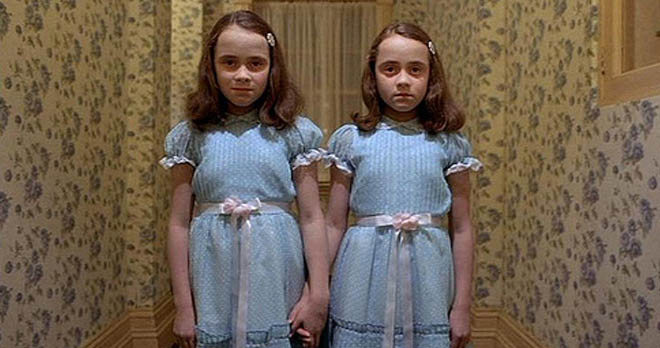Why Some Web Designers are Better Than Others
So, you hired a web designer and it was a disaster! It might be something you did or didn’t do but it might be the fault of the designer. While there are art schools and those who are incredibly self-taught, there are many who were spat through a for-profit school or online course, possibly even a reputable art school but they have no drive, passion, common sense or talent. Many feel it’s a problem in the industry. Both clients and designers are affected by less-than-professional forces in the industry. Is there a place to point a finger, or is it part of the times in which we live and work?
Who’s the Professional Designer?
One of the biggest red flags as to the lack of professional experience and/or disastrous results from a bad web designer is if they accept a very low fee for their design work. You get what you pay for, so that person who laughed when you offered $250 for a complete website because you “can always find someone who will do it for that,” is the one you should call. If you doubt this simple lesson, substitute the title “doctor” or “plumber” for the word “designer” and imagine yourself saying the same thing about $250 to one of those professionals. Would you even want a $250 heart transplant?
©GL Stock Images
It’s a problem more hated by professional designers than clients because it eats away at the industry, respect and fees. Designers often talk about certifications for professionals, which is a hugely unpopular topic, and other ways to have some sort of professional method of identifying themselves as trusted designers. To some it’s their client list and repeat clients. To others, it shouldn’t even be a questioned. They insist that the designers THEMSELVES understand where they stand in the pecking order, somewhat akin to the practice of apprentice, journeyperson, master craftsperson, etc.
This article, entitled “Certifications for U.S. designers to become law in 2015,” was an April Fool’s Day joke that appeared in WebDesignerDepot. The comments, from those who hadn’t yet realized it was a prank were brutal. One designer claimed to have threatened to “punch a baby!”
Two days later, the writer posed the question via the article, “Should creatives be unionized or earn certification?” Perhaps too close to the fake article, which was almost the same. Perhaps just too shocking a thought for creatives. Oddly, creative organizations have long called for unionization or guild status for professional creatives.
Is that mean and self-centered or does it engage confidence in members of the profession? Maybe the easy way to be honest with one’s self is to take this handy test:
You are probably a designer if:
- You are the weird kid who drew in your schoolbooks while other kids studied hard and told the teacher you weren’t working.
- You make a living, or at least a good part of it (the economy being what it is), from design.
- Peers treat you like a professional.
- You’re somewhere on the first page of Google for something you designed.
- Relatives demand you do a logo for their new business and you quote them the regular price right there at the dinner table.
- You want to strangle people for offering you $50 to design a website for them… and have done it once or twice.
- You worry about a client paying so you can make the rent and eat.
- You bitch about having to pay the outrageous price of some design publications.
- You get angry and call the people in the design magazines “overrated hacks.”
- You know the difference between RGB and CMYK and know they are not clothing lines.
- You think crowdsourcing and design contests are eroding the industry.
- You swear your kids will never go to art school!
RELATED: You Paid For It, Now Use It!
You probably are just playing at being a designer if:
- You were the kid telling on the kid drawing in his/her schoolbooks.
- When a relative asks you to do the logo for their business you get excited and tweet to your 12 followers about it.
- When you walk up to a group chatting at a design event, they roll their eyes, become very quiet and scatter quickly — while you are still in mid-sentence.
- You are on the first page of Google only for being arrested or burning down your house by smoking in bed.
- You get excited at $50 for designing a website.
- Your spouse pays all the bills and you have no idea where the checkbook is kept, nor do you care.
- You subscribe to every design magazine to put on the coffee table but never actually read them for fear of being depressed at the articles on professional designers.
- You ask your spouse to buy the latest version of Adobe CS, 24 hours before it’s released and they do it just to shut you up.
- You enroll your kids in every art class there is in town and go with them and yell about how their work is “sloppy” and “lazy” until they cry.
Why This Matters
On a daily basis designers deal with “design-by-committee” from those who feel they are too stupid to be able to do their jobs properly or the supervisor, by some thought process, are better due to the corporate pecking order. Having other “designers” helping knock down the profession in the eyes of clients certainly doesn’t help. Have you ever heard a client offer a low fee and say, “our last designer did it for $50!” The next question should be, “Then why don’t you call him/her to do this project?” The answer would be he/she wasn’t any good.
Have you ever spoken with a client who wanted some spec work first to make sure you could do the work? That’s because the last “designer” screwed up. This is the fallout suffered by working professionals.
©GL Stock Images
At an AIGA Design Week, a key speaker, Brian Singer, creative director and founder of Altitude Associates, a San Francisco based creative agency and the creator of The 1000 Journals Project (a global art experiment where journals are passed from hand to hand) made a statement about a design community and the ability to elevate it to epic proportions.
RELATED: Top 10 Tips for Web Design
“The way you get ahead in design is by lifting up those around you.”
It also works the other way around; those around you lower design for you.
There are several professions that have such dilettantes attached. Actors, writers, even dancers, suffer from those who have no talent but push their way into the inner circles of those who do. Would American Idol be as entertaining if it didn’t start with the lame people who think they have singing talent?
While on the board of a top-level professional organization that had two membership levels — professionals, proven with portfolios and the signature of six members and associates who were involved in the arts in some supportive way — there was a question of unjuried design shows. It seems some associate members wanted to show their work as well.
While almost all professional members flat out refused the idea of sullying the organization’s reputation, one board member imparted that they should be allowed to join in because the entire membership “might miss seeing some beautiful art.”
Needless to say, there was no beautiful art to miss, except for future shows boycotted by professional members. What was left in the shows hurt the organization’s reputation.
See how it works?
Speaking Up
Too often, sitting in a client’s “approval committee,” I see an art director beaten into submission by the “designers” in the crowd. When all the opinions are rendered, I turn to the art director and say, “you’re the art director, why don’t you condense all of these comments into the direction you want?”
I am always thanked for trying to bring them back some dignity. The fact is, they didn’t need to lose it.
There has to be enough confrontation to keep our future profitable. If it means scaring away the “wannabes” or correcting non-creatives who relegate designers to the bottom of the food chain, so be it.
If you don’t speak up, soon there will be nothing to say and designers become nothing more than a pair of hands, moving things around the screen, smudged with greasy fingers as critics point where the logo should be and what type of glitter type they want across the top.
Eventually, a designer will speak up when they are confronted with a failed campaign or branding and they say, “that’s what you told me to do in committee!”
RELATED: .family 2013
That’s the wrong thing to do. Some people say a professional designer knows how to defend their design choices to a client. The most successful professionals ASSERT their design choices right off the bat. It’s an animal thing about claiming one’s territory.
Finding Your Guts is a Big Step in Being a Professional
Even baby steps can help make work more pleasant for clients and designers.
Creatives have to police themselves in such matters. There is no union or organization to assure professionalism or those who wish to label themselves as “designers.” You can either speak up and teach and elevate these people to a professional level or shame them into leaving and hope they will find something new to occupy their playtime.
Mentor art students so they join in the profession as peers and not as detriments to the industry. Train young designers on your staff how to grow and succeed in the field. Open your mouth and tell those who sit on committees that their ideas, if they have no merit, are not in the best interest of the end user/consumer or final product.
Take back the dignity of having the special gift of being able to use creativity to solve visual problems.
When it comes to individuals who want to play with the professionals, shun them until they go away and find another group who will let them play. Eventually, his/her spouse will tire of paying for software upgrades and magazine subscriptions.
A gentle way to convince creative dilettantes to stop ruining the industry:
- Use gibberish in front of them and hope all the other designers join in, like, “I was using the glockenshlorp function on Photoshop and it worked great.” (The dilettante will either be embarrassed and walk away or tout the virtues of the glockenshlorp).
- Say, “I’m sorry, but you need to do at least one design within ten years to be part of this discussion.”
- Just point and laugh at the person until they cry and run away.
- Impart to them that there is the dream and then there is the reality. In the dream, someone else is paying your bills no matter how much work you do or don’t do. In reality, you get hungry and homeless from not working and earning enough.
Although the creative field is unregulated and self-appointed titles of “designer” are not against any law, of man or nature, it’s important that, as a client, you are able to choose between the good and bad as your success relies upon your partnering with a good designer. That designer may do one big project per year or one per week. It’s talent, communication and professional abilities that win clients and respect. Don’t judge by price; judge by what will compliment your brand best.
Top image from The Shining ©Warner Bros.




